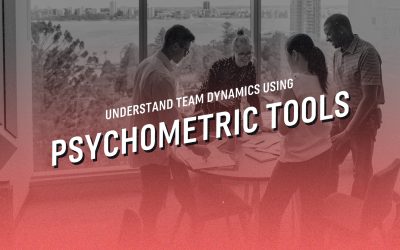Whether it’s the Australian bush fire season, a global financial crisis, the recent COVID outbreak or simply a downturn in your business, leading in unknown territory can be challenging. Here are 6 tips you can keep in mind when things get a bit rocky.
Stay calm and Composed
No one wants a manager who is in a state of panic and chaos; when an executive comes from a place of inner clarity and conviction, it keeps the team in fellowship mode.
As a leader operating in uncertain times, people around you expect you to set the team’s vibe and mood. If everyone is uncertain and lacking clarity, it will quickly spiral out of control.
PI SUPERHEROS: This type of behaviour will come more natural to HIGH-PATIENCE people as they are more calm and composed by default.
Exercise Foresight and act Promptly
Needless to say that in a crisis, you will have to #LeadThePack into unknown territory. This can mean making decisions without all the evidence or even clear roadmap to success.
Now’s the time to think further up ahead ot be on top of the situation by simulating different scenarios and outcomes. This way, you can not only respond, but preempt unfavorable situations to ensure your team doesn’t get left behind.
PI SUPERHEROS: This will come naturally for LOW-PATIENCE people as they are very proactive, usually have a strong sense of urgency, and thrive in changing environments.
Be Flexible
Your first response will rarely be your final response. In these situations, a leader cannot be married to a single strategy, He or she must constantly and simultaneously take in and process new information, listen carefully and consult with the experts.
PI SUPERHEROS (A/C – PROACTIVE VERSUS RESPONSIVE): A fast adaptation will be easier for the HIGH-DOMINANCE with LOW-PATIENCE profiles (A/C) as they are naturally proactive, thrive under pressure, and adapt easily to change. If you are this type, then you won’t have any issues taking control and adapting quickly.
However, listening takes a lot more effort for people who have this profile so remember to pause and listen deeply to staff and colleagues.
If you are on the other hand a HIGH-PATIENCE and LOW-DOMINANCE (C/A) type, then your style is more responsive–you need to take time to understand the why and will be slower to change as you need to understand how said changes will impact others. A natural listener, you’ll have no trouble hearing things well and thoroughly–use that to your advantage.
Listen and give out Clear Communication
It’s unlikely to over-communicate in these times, but don’t waffle and drag on information longer than needed. Make sure you are providing the team with regular daily updates on what is occurring and what is expected of them.
Now might also be the time to implement daily stand ups to keep the team informed and communicating openly with each other–look at the team and what you need to do to meet their needs. Most importantly, leave some room and time for people to ask you their questions and respond accordingly.
PI SUPERHEROS: Look at your team’s profiles and see how they like to be communicated to–some like to talk things out (High B) and others need time to think things through (low B). There is no right or wrong here, but understanding each individual on the team is critical for your collective success.
Align your Expectations
Apart form general direction like you’d normally provide, your team might be looking to you for expectations at a more granular level than usual.
Don’t be afraid to go beyond discussing vision and direction to lift morale, but discuss the details, logistics, and what each person is expected to do deliver exactly.
PI SUPERHEROS: If you are a HIGH-FORMALITY profile, then providing details, rules, and structure is your natural style. However, if you are in the LOW-FORMALITY pool, then you’re likely to be relaxed, informal, and flexible.
Demonstrate Control
When things are happening quickly, it may seem like not one person has complete control, but as leader, it’s your duty to embrace command. That is, you do not merely control the disaster—be it man-made or natural—as much as you control the response.
A leader puts himself into the action and brings the people and resources to bear–think of Red Adair, who made a name for himself putting out oil fires that no one else could. A raging blaze may seem uncontrollable at first glance but Adair knew he could control the way it was extinguished.
PI SUPERHEROS: For those HIGH-DOMINANCE profiles, you will want to take control and be in the driver’s seat, so this will be easy for you. However, for those with a lesser drive to control people and events, your strength will be in your ability to rally the team together and focus selflessly on the entire team.
Provide the Blueprint (Lead by Example)
In any case, a leader’s biggest role is likely to create fellowship by getting into the action. Don’t expect your people to follow you just because, especially if you are not demonstrating the right behaviours and are doing what you are asking others to do.
Since a big part of leadership is based on accountability, it’s important to hold yourself accountable to the exact same standards you are putting in place on others. In short, you need to be pulling the weight at the front of the line.
PI SUPERHEROS: Understand that everyone will want to work differently in these difficult times. It’s your opportunity as a leader to understand each and every individual in your team and identify how to bring them together in total alignment to work together on a common goal.
Read more Blogs
Understanding Your Team: DISC Assessment Test vs. Predictive Index
Leading a world-class team means more than meeting basic needs; it requires a deep understanding of what drives and motivates your people. Tools like the DISC assessment test and The Predictive Index offer valuable insights into your team’s behaviour and motivation,...
Enhancing Leadership with The Predictive Index at Lake Macquarie City Council
Lake Macquarie City Council is an organisation that proactively cultivates learning within a framework of personal accountability and working together to shape the community. With more than 1300 employees, the organisation, introduced the SAIL Emerging Leaders program...
Using The Predictive Index Psychometric Test for Recruitment
How many of you have faced this scenario before? You find what seems like the perfect candidate - their resume ticks all the boxes, their experience aligns with the job requirements, and they performed well during the interview. So, you hire them. But just a few...


